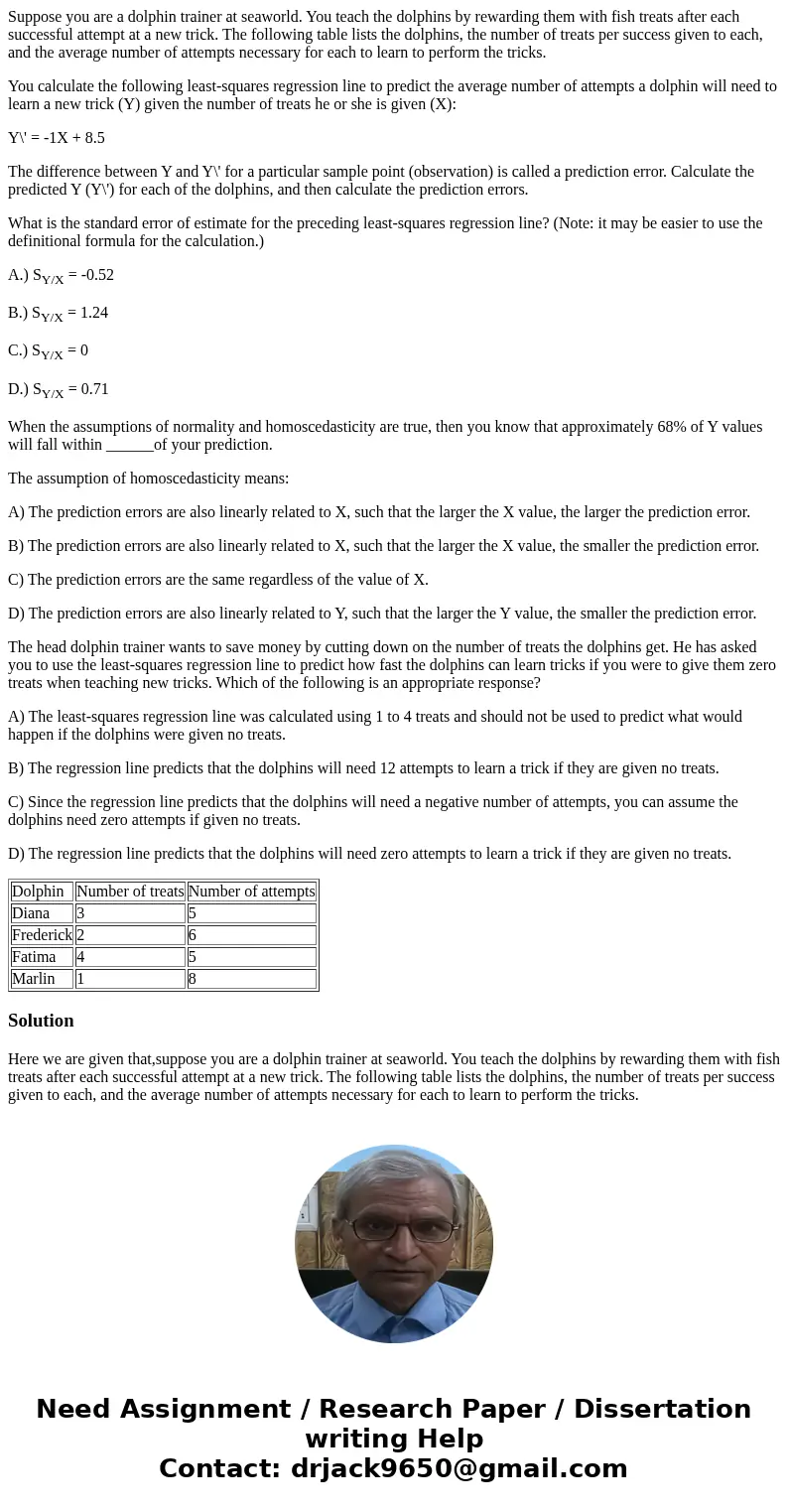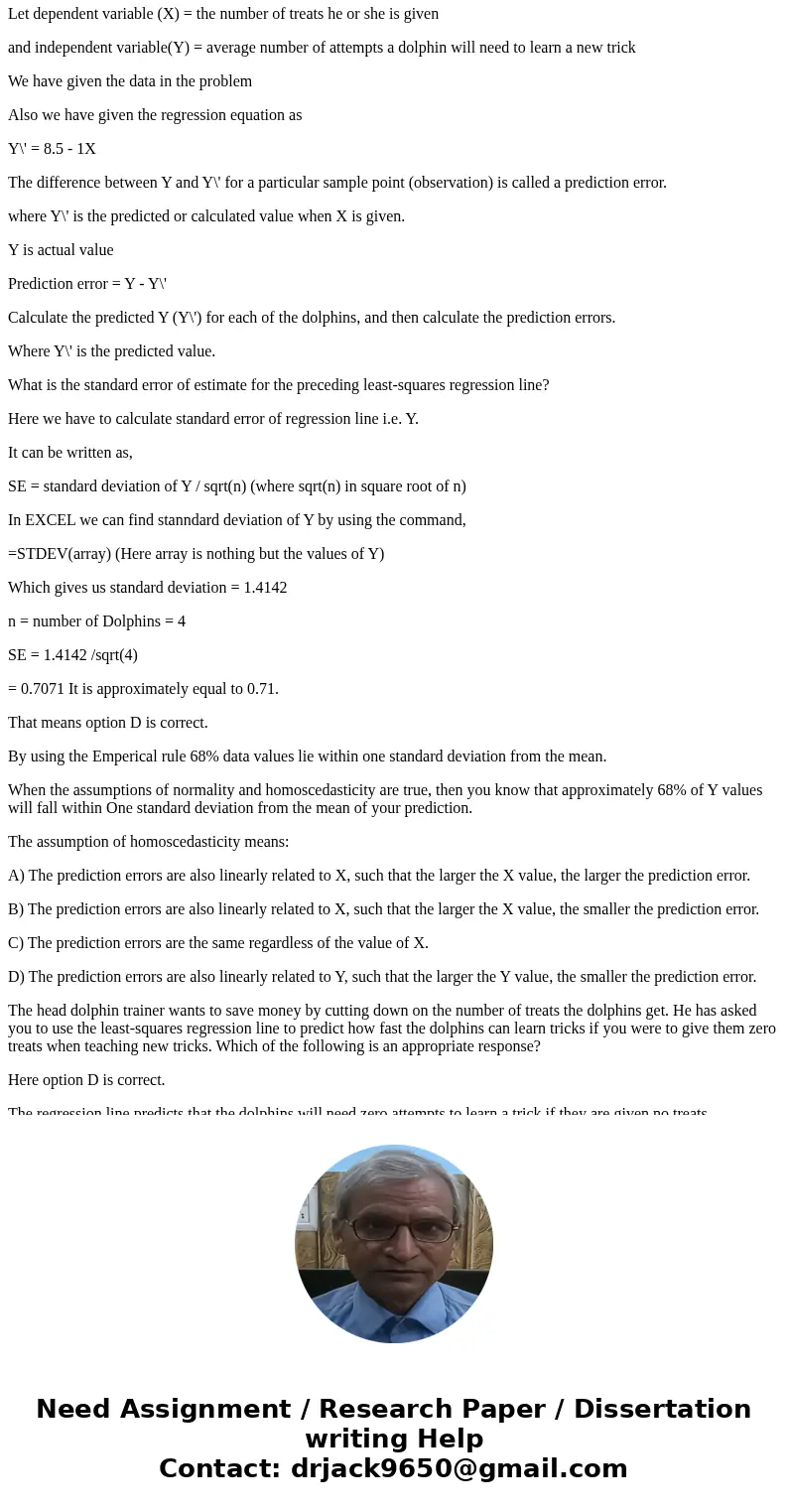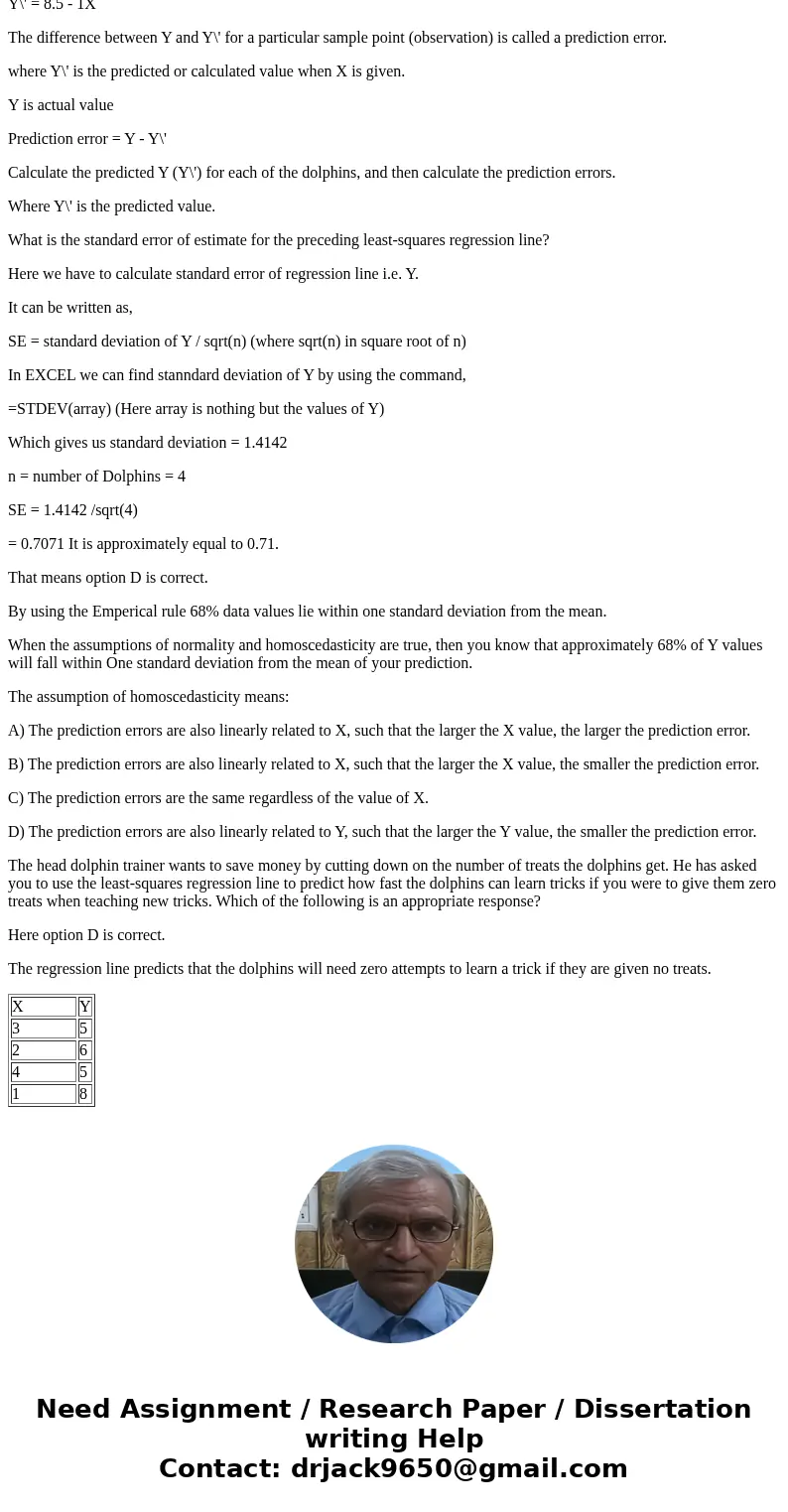Suppose you are a dolphin trainer at seaworld You teach the
Suppose you are a dolphin trainer at seaworld. You teach the dolphins by rewarding them with fish treats after each successful attempt at a new trick. The following table lists the dolphins, the number of treats per success given to each, and the average number of attempts necessary for each to learn to perform the tricks.
You calculate the following least-squares regression line to predict the average number of attempts a dolphin will need to learn a new trick (Y) given the number of treats he or she is given (X):
Y\' = -1X + 8.5
The difference between Y and Y\' for a particular sample point (observation) is called a prediction error. Calculate the predicted Y (Y\') for each of the dolphins, and then calculate the prediction errors.
What is the standard error of estimate for the preceding least-squares regression line? (Note: it may be easier to use the definitional formula for the calculation.)
A.) SY/X = -0.52
B.) SY/X = 1.24
C.) SY/X = 0
D.) SY/X = 0.71
When the assumptions of normality and homoscedasticity are true, then you know that approximately 68% of Y values will fall within ______of your prediction.
The assumption of homoscedasticity means:
A) The prediction errors are also linearly related to X, such that the larger the X value, the larger the prediction error.
B) The prediction errors are also linearly related to X, such that the larger the X value, the smaller the prediction error.
C) The prediction errors are the same regardless of the value of X.
D) The prediction errors are also linearly related to Y, such that the larger the Y value, the smaller the prediction error.
The head dolphin trainer wants to save money by cutting down on the number of treats the dolphins get. He has asked you to use the least-squares regression line to predict how fast the dolphins can learn tricks if you were to give them zero treats when teaching new tricks. Which of the following is an appropriate response?
A) The least-squares regression line was calculated using 1 to 4 treats and should not be used to predict what would happen if the dolphins were given no treats.
B) The regression line predicts that the dolphins will need 12 attempts to learn a trick if they are given no treats.
C) Since the regression line predicts that the dolphins will need a negative number of attempts, you can assume the dolphins need zero attempts if given no treats.
D) The regression line predicts that the dolphins will need zero attempts to learn a trick if they are given no treats.
| Dolphin | Number of treats | Number of attempts |
| Diana | 3 | 5 |
| Frederick | 2 | 6 |
| Fatima | 4 | 5 |
| Marlin | 1 | 8 |
Solution
Here we are given that,suppose you are a dolphin trainer at seaworld. You teach the dolphins by rewarding them with fish treats after each successful attempt at a new trick. The following table lists the dolphins, the number of treats per success given to each, and the average number of attempts necessary for each to learn to perform the tricks.
Let dependent variable (X) = the number of treats he or she is given
and independent variable(Y) = average number of attempts a dolphin will need to learn a new trick
We have given the data in the problem
Also we have given the regression equation as
Y\' = 8.5 - 1X
The difference between Y and Y\' for a particular sample point (observation) is called a prediction error.
where Y\' is the predicted or calculated value when X is given.
Y is actual value
Prediction error = Y - Y\'
Calculate the predicted Y (Y\') for each of the dolphins, and then calculate the prediction errors.
Where Y\' is the predicted value.
What is the standard error of estimate for the preceding least-squares regression line?
Here we have to calculate standard error of regression line i.e. Y.
It can be written as,
SE = standard deviation of Y / sqrt(n) (where sqrt(n) in square root of n)
In EXCEL we can find stanndard deviation of Y by using the command,
=STDEV(array) (Here array is nothing but the values of Y)
Which gives us standard deviation = 1.4142
n = number of Dolphins = 4
SE = 1.4142 /sqrt(4)
= 0.7071 It is approximately equal to 0.71.
That means option D is correct.
By using the Emperical rule 68% data values lie within one standard deviation from the mean.
When the assumptions of normality and homoscedasticity are true, then you know that approximately 68% of Y values will fall within One standard deviation from the mean of your prediction.
The assumption of homoscedasticity means:
A) The prediction errors are also linearly related to X, such that the larger the X value, the larger the prediction error.
B) The prediction errors are also linearly related to X, such that the larger the X value, the smaller the prediction error.
C) The prediction errors are the same regardless of the value of X.
D) The prediction errors are also linearly related to Y, such that the larger the Y value, the smaller the prediction error.
The head dolphin trainer wants to save money by cutting down on the number of treats the dolphins get. He has asked you to use the least-squares regression line to predict how fast the dolphins can learn tricks if you were to give them zero treats when teaching new tricks. Which of the following is an appropriate response?
Here option D is correct.
The regression line predicts that the dolphins will need zero attempts to learn a trick if they are given no treats.
| X | Y |
| 3 | 5 |
| 2 | 6 |
| 4 | 5 |
| 1 | 8 |



 Homework Sourse
Homework Sourse